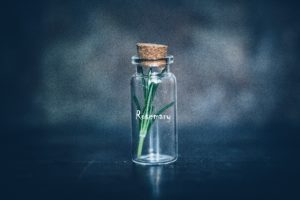Preventing Mold The Eco-Friendly Way
 Cleaning mold is essential for your health, as well as preventing it from leading to structural problems from damp. However, conventional cleaning products often contain harmful ingredients, with the Environmental Working Group finding that more than half of products contain ingredients that are known to irritate the lungs. Fortunately, there are plenty of eco-friendly ways to do this, from using a dehumidifier and house plants for reducing moisture levels in the air, to fixing any leaks that could lead to problems.
Cleaning mold is essential for your health, as well as preventing it from leading to structural problems from damp. However, conventional cleaning products often contain harmful ingredients, with the Environmental Working Group finding that more than half of products contain ingredients that are known to irritate the lungs. Fortunately, there are plenty of eco-friendly ways to do this, from using a dehumidifier and house plants for reducing moisture levels in the air, to fixing any leaks that could lead to problems.
General chemical-free ways to prevent mold
There are many ways to prevent mold by ensuring that you don’t create conditions that are optimal for it. For example, if you notice any leaks coming from places like roofs, pipes, or windows they should be fixed promptly and any water coming in from them needs to be cleaned up regularly. The National Institute for Health and Care Excellence recently released information advising people to regularly open windows to remove damp air from indoors as it’s linked to several health problems, particularly asthma and other breathing difficulties. If windows can’t be opened, extractor fans should be used, such as during cooking, showering, and bathing.
Use a dehumidifier or dehumidifying plants
Mold needs moisture to grow, so using a dehumidifier to reduce moisture levels in the air can prevent it. Ideally, aim for a humidity level between 40 and 60%, though this largely depends on the outside temperature. This will be a comfortable level, as well as lower than ideal conditions for mold. However, dehumidifiers need energy to run, so they aren’t the most eco-friendly solution, but can be a helpful option. Thankfully, certain plants are very good at absorbing moisture through their leaves, making them a super-green and eco-friendly way to reduce humidity levels. The Peace Lily is a great example that’s easy to care for and also absorbs certain contaminants from the air, helping to purify it too. Reed palm, English ivy, and the Boston fern are all good options too.
Getting rid of mold without chemicals
You can take all the preventative measures, but sometimes mold will still find a way to grow. The good news is that mold can be killed without the use of toxic chemicals. In fact, using vinegar to kill mold is actually better than bleach on porous materials as it can penetrate the surface and kill mold at a deeper level, which will reduce the likelihood of it from coming back again. In comparison, bleach only kills the mold on the surface, so the mold is more likely to keep growing back. Baking soda, a natural disinfectant, can be mixed with vinegar for other surfaces. Simply dissolve it in a water and vinegar solution, spray it on the mold, let it sit for a few hours, and then wipe it away with a damp cloth.
Preventing mold is better than trying to remove it once it grows, especially for those who want to keep their homes eco-friendly and free of chemicals and other toxins. Using a dehumidifier, opening windows, and having house plants are all great eco-friendly ways to combat mold.
By Sally Writes.


Sorry, the comment form is closed at this time.